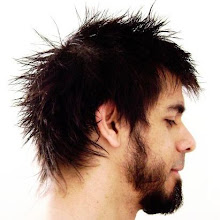I forgot to note down that I started my Japanese classes a week ago! This is the fourth year for me. The first three years were 初級 shokyuu, elementary level; this is 中級 chuukyuu ichi, the first year of the middle level. (Yes, it takes you three years, nine months a year, 3 hours a week, plus additional courses, to achieve a basic mastery of Japanese — 1,500 words only. You can't compose a children's dictionary with that.)
We're going to use a new book from now. Vale-sensei, who was my teacher during my first year in the Japanese Association, is again with us. She showed us the book, noting with barely disguised glee that it has almost no furigana, i.e. the small syllabic characters (kana) used for phonetic spelling that appear next to ideograms (漢字 kanji). Our old book always had furigana. By now we should know at least 300 kanji, from the simplest ones like 山 "mountain", 人 "person" and 中 "inside" to the ones representing concepts like "sick" (病) and "electricity" (電). It's actually simpler to read a mixture of kanji and kana, but only if you're absolutely familiar with the kanji.
I also received the results of the Japanese Language Proficiency Test I took in December. I passed this sankyuu (third level) with a very good score, though not as easily as I'd passed yonkyuu (fourth level) the previous year. The next step, nikyuu, is still a faraway dream; the requirements are much higher. I'll need the three years of intermediate level to prepare for it. That includes learning another 300 kanji. I'm going to need a study method for that; quick visual recognition is only OK for characters with eight or nine strokes at most.
The original Chinese characters (hànzì) usually have one and only one reading, but Japanese kanji typically have two or three, depending on what is attached to them. When the same character was borrowed from different dialects of Chinese (separated geographically or chronologically) the result is several completely arbitrary readings. On occasion the only way to guess a reading is by the semantic context; the kanji 一日 ("one" and "day") put together can be read as ichinichi "all day" or as tsuitachi "first day of the month". The Japanese simplified the kanji several times (the Chinese did the same independently), and even invented a few characters (like 込 "to crowd, congestion, full"). The characters also drifted from their original meanings. The extremely simple ancient Japanese phonology tried to accomodate the Chinese pronunciation, but despite several interesting developments, it failed miserably. (Chinese has changed a lot since then, so anyway you can't guess one based on the other.)
Vale-sensei treated us to a preview — or better, a pre-hearing — of the book's aural comprehension exercises: a girl speaking at just the average Japanese machine-gun rhythm for about two minutes. I got about half of what she said. Boy this will be hard.
22 March 2007
日本パーティー
Subscribe to:
Post Comments (Atom)













おめでとうございます paburo-san!
ReplyDeleteGanbate kudasai Paburo-san! Love your posts!
ReplyDeleteJust catching up with your posts for the past couple of weeks...
ReplyDeleteBest of luck with the Chinese characters. When I was learning them as a young girl, the teacher would take the more complicated words apart - they are made up of components like the simple word of "girl" or "female" is incorporated in literally all words to do with female such as aunt, slave, rape, etc.
All the best
Pablo - I thought you may be interested in this great web resource:
ReplyDeletehttp://ocw.mit.edu/OcwWeb/index.htm
MIT is starting to put its undergraduate courses online (including 5 of Japanese)!
John